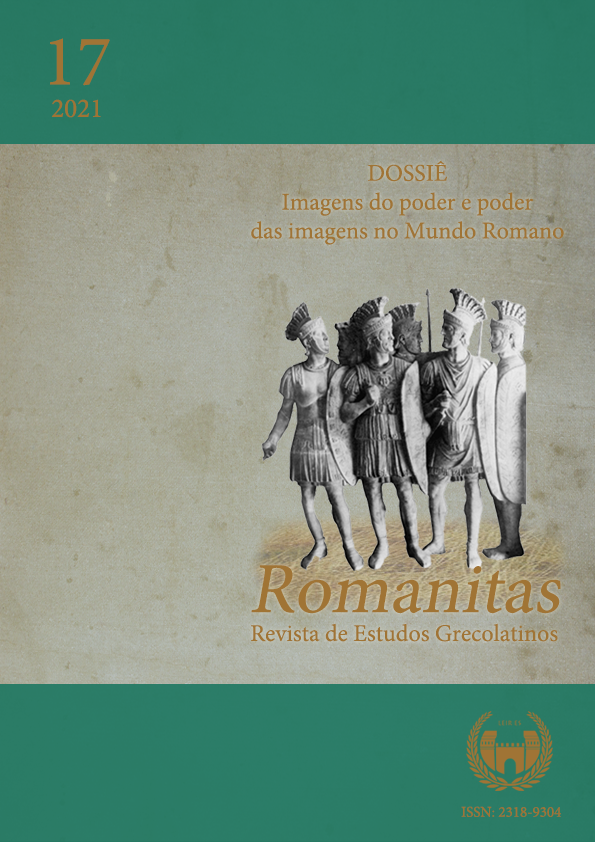Theodore the Studite and his opposition to imperial power: an analysis of the Moechian Controversy and the Second Iconoclasm
DOI:
https://doi.org/10.17648/rom.v0i17.35352Keywords:
Theodore the Studite, Moechian Controversy, Iconoclasm, Imperial Power, ByzantiumAbstract
Theodore the Studite was a monk who, in the course of the 9th century, was an important force of opposition to imperial decisions judged by him as outrageous to Byzantine Christian ideals. On two occasions he was opposed to the emperor and his actions, suffering consequences and punishments, such as exile. As a result, our objective is part of the attempt of understanding Theodoro's role as an agent of opposition to the Imperial Palace and its relations with it, since the monks were considered important means of contact and influence on Byzantine society. We intend to do this from the case study of the Moechian Controversy and the Second Iconoclasm (815-843), where in both the monk was the protagonist.
Downloads
References
Documentação textual
GRUMEL, V. Le patriarcat byzantine, série I: les regestes des actes du patriarcat de Constantinople. Les actes patriarches, fasc. II et III. Les regestes de 715 à 1206. Paris: Institut Français d’Études Byzantines, 1989. v. 1.
TESTAMENT of Theodore the Studite for the Monastery of St. John Stoudios in Constantinople. In: THOMAS, J.; HERO, A. C. (ed.). Byzantine monastic foundation documents: a complete translation of the Surviving Founder’s Typika and Testaments. Washington: Dumbarton Oaks, 2000, p. 67-83.
Obras de apoio
ALEXANDER, P. J. Religious persecution and resistance in the Byzantine Empire of the eighth and ninth centuries: methods and justifications. Speculum, v. 52, n. 2, p. 238-264, 1977.
BENOIT-MEGGENIS, R. L’empereur et le moine: recherches sur les relations entre le pouvoir impérial et les monastères à Byzance, du IXe siècle à 1204. 2010. Tese (Doutorado em História) – École Doctorale en Sciences sociales, Université Lumière Lyon 2, Lyon, 2010.
CHARANIS, P. The monastic properties and the state in the Byzantine Empire. Dumbarton Oaks Papers, v. 4, p. 53-118, 1948.
CHOLIJ, R. Theodore the stoudite: the ordering of holiness. Oxford: Oxford Scholarship Online, 2009.
KAZHDAN, A. P. (ed.). The Oxford Dictionary of Byzantium. Oxford: Oxford University Press, 1991. v. 3.
McGUCKIN, J. The theology of images and the legitimation of power in eighth century Byzantium. St Vladimir’s Theological Quarterly, p. 39-58, 1993.
MEYENDORFF, J. Byzantine theology: historical trends and doctrinal themes. New York: Fordham University Press, 1979.
MILLER, T. Theodore Studites: Testament of Theodore the Studite for the Monastery of St. John Stoudios in Constantinople. In: THOMAS, J.; HERO, A. C. (ed.). Byzantine monastic foundation documents: a complete translation of the Surviving Founder’s Typika and Testaments. Washington: Dumbarton Oaks Research Library and Collection, 2000, p. 67-83.
MORRIS, R. Monks and laymen in Byzantium, 843-1118. Cambridge: Cambridge University Press, 1995.
OSTROGORSKY, G. Historia del Estado bizantino. Madrid: Akal, 1984.
STAMBOLOV, A. Monks and state: St Theodore the Studite and his relations to the State and Church authorities in Byzantium. Phronema, v. 30, n. 1, p. 137-165, 2005.
TREADGOLD, W. Breve historia de Bizancio. Barcelona: Paidós Ibérica, 2001.
Downloads
Published
How to Cite
Issue
Section
License
Copyright (c) 2021 Caroline Coelho Fernandes

This work is licensed under a Creative Commons Attribution-NonCommercial-NoDerivatives 4.0 International License.
a. The authors retain copyright and grant the journal the right to first publication.
b. The authors are authorized to assume additional contracts separately, for non-exclusive distribution of the version of the work published in this journal (e.g., publishing in institutional repository or as a book chapter), with acknowledgment of authorship and initial publication in this journal.
c. Authors are allowed and encouraged to publish and distribute their work online (e.g. in institutional repositories or on their personal page) after the first publication by the journal, with due credit.
d. The journal's texts are licensed under a CC BY 4.0 Deed Attribution 4.0 International Licence (CC BY).




























